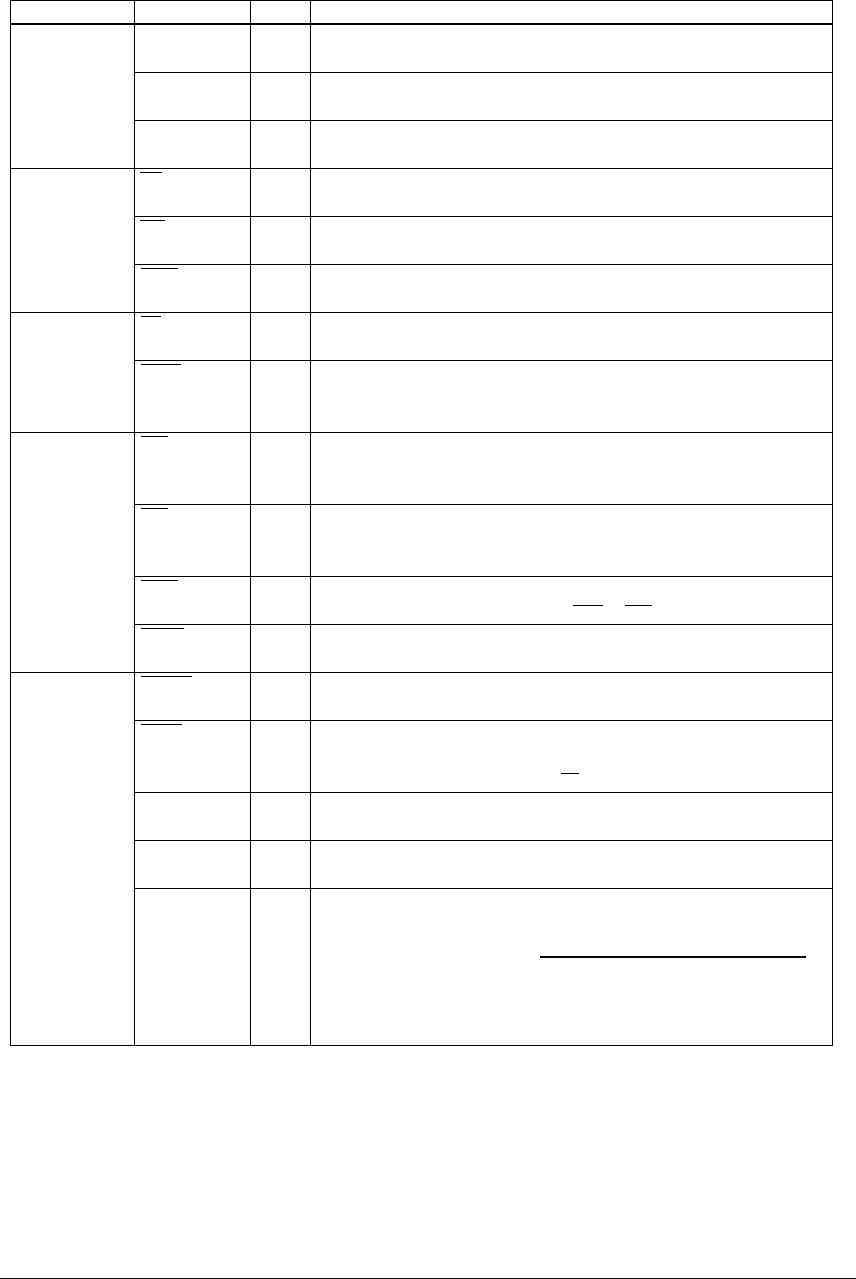
S1C63000 CORE CPU MANUAL EPSON 3
CHAPTER 1: OUTLINE
Table 1.4.1(b) Input/output signal list (2)
Type I/O
I
I/O
I/O
O
O
O
I
O
I
I
O
O
O
O
O
O
O
FunctionTerminal name
Data bus
Bus control
signal
System control
signal
Interrupt signal
Status signal
I00–I12
M00–M15
D0–D3
RD
WR
RDIV
SR
USLP
NMI
IRQ
IACK
NACK
FETCH
STOP
IF
BS16
DBS0
DBS1
Instruction bus
Inputs an instruction code.
16-bit data bus
A bidirectional data bus to connect to the RAM (stack RAM) for 16-bit accessing.
4-bit data bus
A bidirectional data bus to connect to the RAM and I/O.
Data read
Goes to a low level when the CPU reads data (from RAM, I/O).
Data write
Goes to a low level when the CPU writes data (to RAM, I/O).
Read interrupt vector
Goes to a low level when the CPU reads an interrupt vector.
Reset input
A low level input resets the CPU.
Micro sleep
Goes to a low level when the CPU executes the SLP instruction.
The peripheral circuit stops oscillation on the basis of this signal.
Non-maskable interrupt request
An interrupt request terminal for an interrupt that cannot be masked by software.
It is accepted at the falling edge of an input signal to this terminal.
Interrupt request
An interrupt request terminal for interrupts that can be masked by software.
It is accepted by a low level signal input to this terminal.
Interrupt acknowledge
Goes to a low level while executing an NMI or IRQ interrupt response cycle.
Non-maskable interrupt acknowledge
Goes to a low level while executing a non-maskable interrupt response cycle.
Fetch cycle
Goes to a low level when the CPU fetches an instruction.
Stop signal
Goes to a low level when the CPU is in stop status after executing the HALT
or SLP instruction, or in reset status (SR is low).
Interrupt flag
Outputs a status (inverted value) of the interrupt flag in the flag (F) register.
16-bit access
Goes to a low level when the CPU accesses to a 16-bit RAM.
Data bus status
Outputs data bus status (for both the 4-bit and 16-bit data bus).
DBS1
0
0
1
1
DBS0
0
1
0
1
State
High impedance
Interrupt vector read
Memory write
Memory read
See Chapter 3, "CPU OPERATION", for the timing of the signals.


















